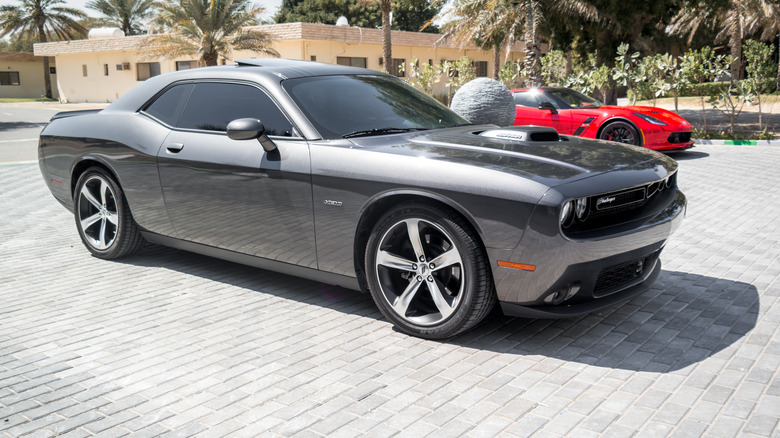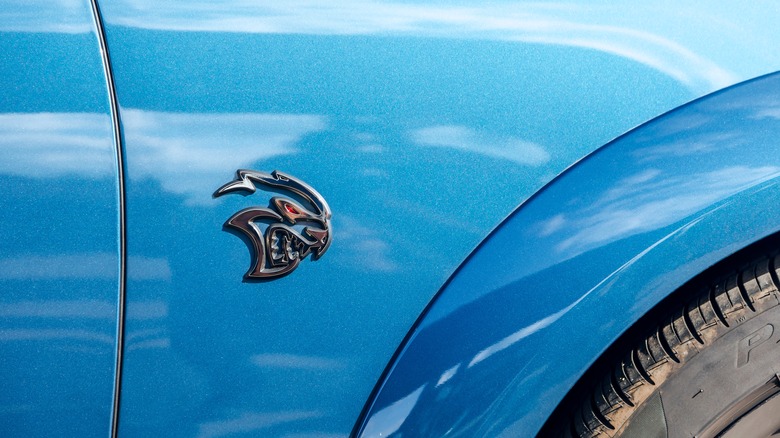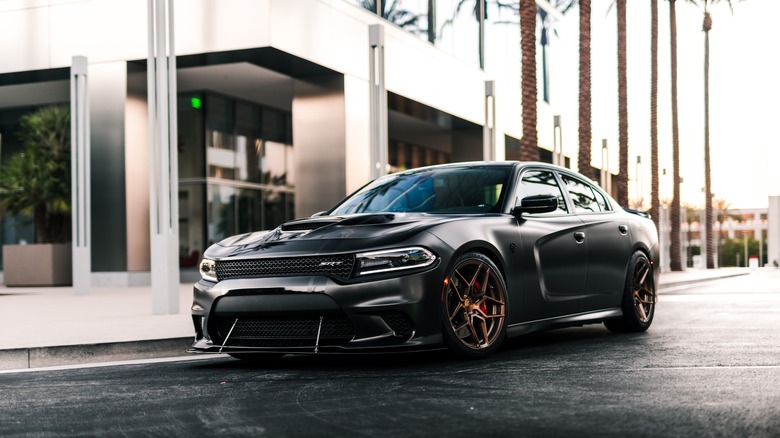How Dodge Came Up With The Name And Logo Behind The Hellcat
Any muscle car enthusiast will certainly recognize the Dodge Challenger and Charger SRT Hellcats as some of the beefiest in the category. In fact, at the time of its release, it was the most powerful production car in history. These automotive beasts have significantly pushed the envelope with over 700 horsepower under the hood and even some variants that went all the way up to 800. These motorway monsters have been around since 2015, but with 2023 being the final year of production, you might be surprised at how the company came up with the fiery name and snarling big cat-inspired logo.
The ferocious-sounding Hellcat name automatically invokes power and performance and these are cars that produce both in very large quantities. The roaring-cat logo is the design touch that added an exclamation point. However, as amazing as it sounds, it was not originally planned to be there.
The logo that almost wasn't
The snarling cat logo wasn't originally Dodge's plan for the car; at the first press event, it simply had the word "Supercharged" where the logo would later end up. But when it was first announced, Dodge tried a different strategy by using the power of social media to gauge people's reactions to the name. After wisely weighing people's excitement, it was decided at the last minute to brainstorm big cat-inspired logos. It ended up being a great example of using social media to power the creative process.
Some of the earlier sketches of the logo had the cat facing toward you, evilly grinning, and they even had another one that had a cat with an arched back, seemingly ready to attack. Needless to say, the final product won out and the simple profile of a snarling big cat facing toward the road was the best look for their latest muscle car models.
How the Hellcat name came to be
When you hear the word Hellcat you might think of some kind of fiery big cat from the depths of the underworld, but that wasn't the inspiration for the name at all. Instead, Dodge was inspired by the World War 2 era Grumman F6F Hellcat fighter; a powerful and rugged airplane used in the Pacific against Japan. These tough fighters would often return from battle full of bullet holes, but would still be ready to return to combat, lending a feeling of sturdiness and craftsmanship to Dodge's latest creation. They were also comparable to a muscle car in that they had extremely high horsepower engines.
The Dodge Challenger and Charger SRT Hellcats were obviously going to make a big splash at the time of their release in the automotive world with their formidable size and record-breaking horsepower in a production car. But the last-minute logo and the Hellcat name came to be signature moves by Dodge in making these muscle cars historic additions to its product lines.


